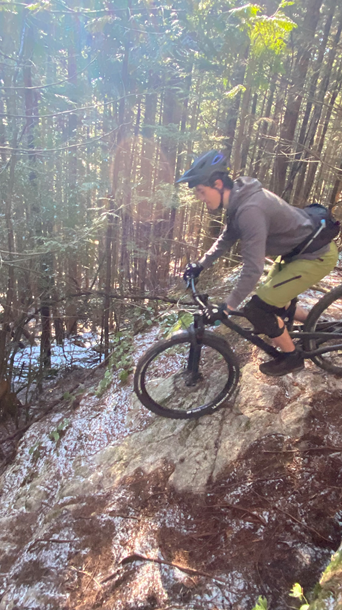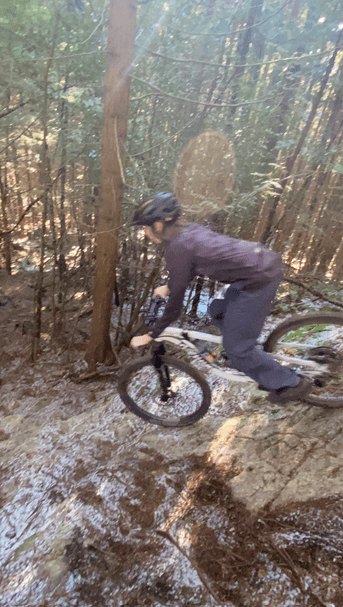The past two weeks of In-Depth didn’t quite go as I had hoped. In my meeting with my mentor two weeks ago, we talked about what I could try between meetings, we ended up deciding that I could try taking pictures with my cell phone, and then we would look at them and discuss what worked well and what didn’t. Neither of us had ever tried taking action photos on a cell phone so we didn’t know how well it would work. I only managed to get out and take some photos twice over the two weeks and here are a few of the photos that I got:



As you can see, none of them turned out well, all of them were blurry and they didn’t capture any action. I had a very short meeting with my mentor just to talk about the photos and what I liked and what I didn’t as well as what caused the issue. As they all have similar issues, I will just talk about them all together rather than talking about each one and what went wrong. The main issue was that none of them were in focus. For the most part, this was due to the shutter speed being too slow. This means that the camera is letting in too much light which makes the movement visible and makes it nearly impossible to get the subject in focus. On top of that, there’s no way to adjust the focus on the phone which means that I can’t choose the area of focus. A couple of the photos are a little on the bright side as well, this could have been improved with a faster shutter speed and tweaked to perfection by adjusting the iso. The iso makes the photo brighter however makes the photo grainier so it could also make the focus slightly better by lowering it. It also would have been nice to be able to adjust the aperture. This gives the double effect of being able to choose the depth of field of the photo as well as letting more or less light into the photo. Finally, I didn’t know what angle to take the photos from, and even after trying a few different ones, I wasn’t overly happy with the result.
So based on the result of the photos my mentor and I decided that it wasn’t worth trying to continue with the cell phone photos. The issue is that they are in an automatic setting and a good one at that. This means that still photos they’re great, it chooses all the settings for you. Once you take a moving subject into play then this is a major downfall as it doesn’t know that. There’s no way to make the shutter speed faster which as I mentioned means that you can’t get the subject in focus. I think there are apps you can buy that let you change some of the settings however neither of us thinks that it’s worth it and it makes more sense to move onto the camera where I can shoot in full manual or even shutter speed priority. Shutter priority is where I select the shutter speed however the camera does the rest of the work. This makes learning how to take action photos much easier to start and is most likely how I will start. We are having another longer meeting this week so that I can start looking at taking pictures with a camera and getting better results from it.
For reference, here is a photo I took the same day as the others of my bike on my cell phone. This shows how strong the automatic settings on the phone can be when it is on a still subject.

So far, I’ve enjoyed the mentoring sessions with my mentor, I like how you can tell he enjoys the project and wants to be a part of it. I also like that he goes in-depth when answering my questions and gives me as much detail as he can. One challenge I’ve had so far is getting the paperwork from my mentor, he did the volunteer paperwork right away however I still haven’t gotten the crim check. I’ve been pushing him a bit to get it however I don’t want to push too hard as at the end of the day, he is doing so much for me to make this project work. At the end of the day, I am the one that needs the crim check not him so I will continue to try and get it from him, and I will try to set a deadline for it by our next meeting. It has also been sort of frustrating trying to take photos with the cell phone because I put time into trying to find the right angle and the right features but wasn’t able to get a decent shot from all the photos I took.
One strategy I could use to enhance my learning would be to communicate more with my mentor in between meetings. This could be implemented by sending him an email if I have a problem or if was wondering something about a photo I took. This could be beneficial to me because I could get more practice done in between meetings and get more from the practice. Secondly, trying to ask my mentor more questions in our meetings. This could be done by preparing a few questions before we talk as well as coming up with a few on the spot. This shows my mentor that I am engaged with what he is saying, that I am interested and passionate about the project, and could help me gain more from each meeting. Finally, try to take as many photos as possible between meetings as practice. This way, I can see what works well and what doesn’t as well as give me better results which also shows my mentor that I am passionate about the project and able to learn and implement what he is teaching me. To me, my mentor must know I want to learn about this and it isn’t just for school which is why I chose those three strategies to improve my mentoring interactions.
This week, my mentor and I will have a longer meeting where we will start to look at taking photos with a camera most likely in shutter priority mode. This will allow for a lot more control over the photos I take and produce a much better result than what was taken with my phone. We will also talk about how to select an angle and a location for the shot.
-Ronan
